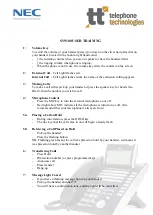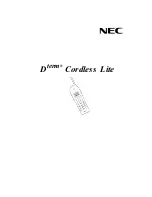
TE 13 Operating Instructions
11
What else you should know about the individual functions
If you would like to make an external call, you first need to
occupy an external line. How you do this depends on the tele-
phone system you have. The alphabetic labelling allows you to
dial so called vanity numbers.
You can use this function to talk to a party within your in--house
telephone system during an already existing call.
The redial function dials the last call number again. Specific
redial lets you redial a call number that you have stored specifi-
cally for this purpose. You can add digits to the number manu-
ally. Numbers that you have dialled using a destination or
speed--dial key cannot be redialled using the redial button.
Integral 5 / 3:
for external call numbers only
As soon as the subscriber’s line is free, your telephone rings.
Lifting the handset will redial the call number.
Integral 5 / 3:
You can also request a call--back if the other sub-
scriber does not answer the phone.
Integral 33:
You can store a call number under each of the digit
keys 0 – 9. This number can contain up to 24 digits. If a number
has already been stored under a digit key, this number will be
overwritten once a new call number is entered.
Integral 5 / 3:
The speed--dial destinations are set by your ser-
vice point.
Integral 33:
This function allows you to dial numbers stored cen-
trally in the system. If required, you can enter additional digits
after the code dial number e.g. an extension number.
Integral 33:
If you have cut yourself out of a hunt group line, you
may still be reached via your internal or external extension num-
ber.
Integral 33:
This function enables you to use another telephone
(excluding TH 13, TM 13 and TS 13) to set up call diversion for
your telephone. You must, however, first set up the diversion on
your phone.
Making
calls
Consultation
Redial
Call--back
Speed dial
Code dial
Hunt group
line
Follow me


































